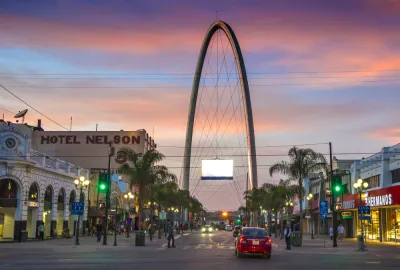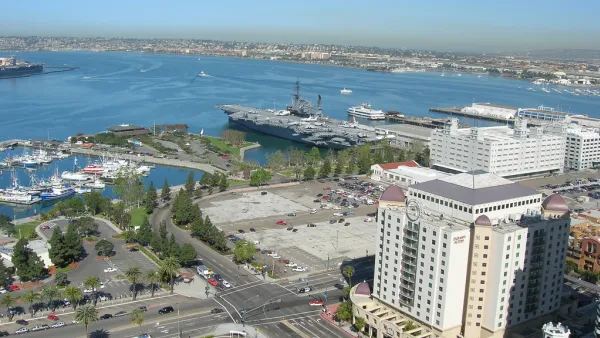On a recent tour of Tijuana for young land use professionals, San Diego architect Marin Gertler found a city that used the drought of U.S. tourism in the last decade to redefine and refine its urban core.

The combination of cartel violence and the U.S. recession were a one-two punch to the downtown Tijuana retail and restaurant economy. Long dependent on day tripper tourists and young American revelers, Tijuana was known primarily for its hawkers selling everything from tacky curios, to margaritas and beer, to more illicit goods and services—not to mention the tourists, many tacky themselves, who ambled or drunkenly stumbled down its streets.
The well publicized cartel violence, including some gun battles in Tijuana itself, deterred tourism. The recession, internet shopping, and long border waits all likely played a role too. Many Tijuana businesses, dependent on tourism, closed down, and the city's main tourist street, Avenida Revolucion, became a "ghost town of empty commercial spaces and former bars." However, this weaning from tourism (of the lowest variety) may have had a silver lining. On a recent tour put on by the Urban Land Institute San Diego/Tijuana Young Leader Partnership Forum, San Diego Gensler architect Marin Gertler found a revitalizing Tijuana urban core, not so dependent on tourism and catering more to young creatives—both local and from across the border. He writes about three stops on the tour that particularly inspired him. Find out more at the source article.
FULL STORY: Three great things happening now in downtown Tijuana, Baja California

National Parks Layoffs Will Cause Communities to Lose Billions
Thousands of essential park workers were laid off this week, just before the busy spring break season.

Retro-silient?: America’s First “Eco-burb,” The Woodlands Turns 50
A master-planned community north of Houston offers lessons on green infrastructure and resilient design, but falls short of its founder’s lofty affordability and walkability goals.

Delivering for America Plan Will Downgrade Mail Service in at Least 49.5 Percent of Zip Codes
Republican and Democrat lawmakers criticize the plan for its disproportionate negative impact on rural communities.

Test News Post 1
This is a summary

Test News Headline 46
Test for the image on the front page.

Balancing Bombs and Butterflies: How the National Guard Protects a Rare Species
The National Guard at Fort Indiantown Gap uses GIS technology and land management strategies to balance military training with conservation efforts, ensuring the survival of the rare eastern regal fritillary butterfly.
Urban Design for Planners 1: Software Tools
This six-course series explores essential urban design concepts using open source software and equips planners with the tools they need to participate fully in the urban design process.
Planning for Universal Design
Learn the tools for implementing Universal Design in planning regulations.
EMC Planning Group, Inc.
Planetizen
Planetizen
Mpact (formerly Rail~Volution)
Great Falls Development Authority, Inc.
HUDs Office of Policy Development and Research
NYU Wagner Graduate School of Public Service



























